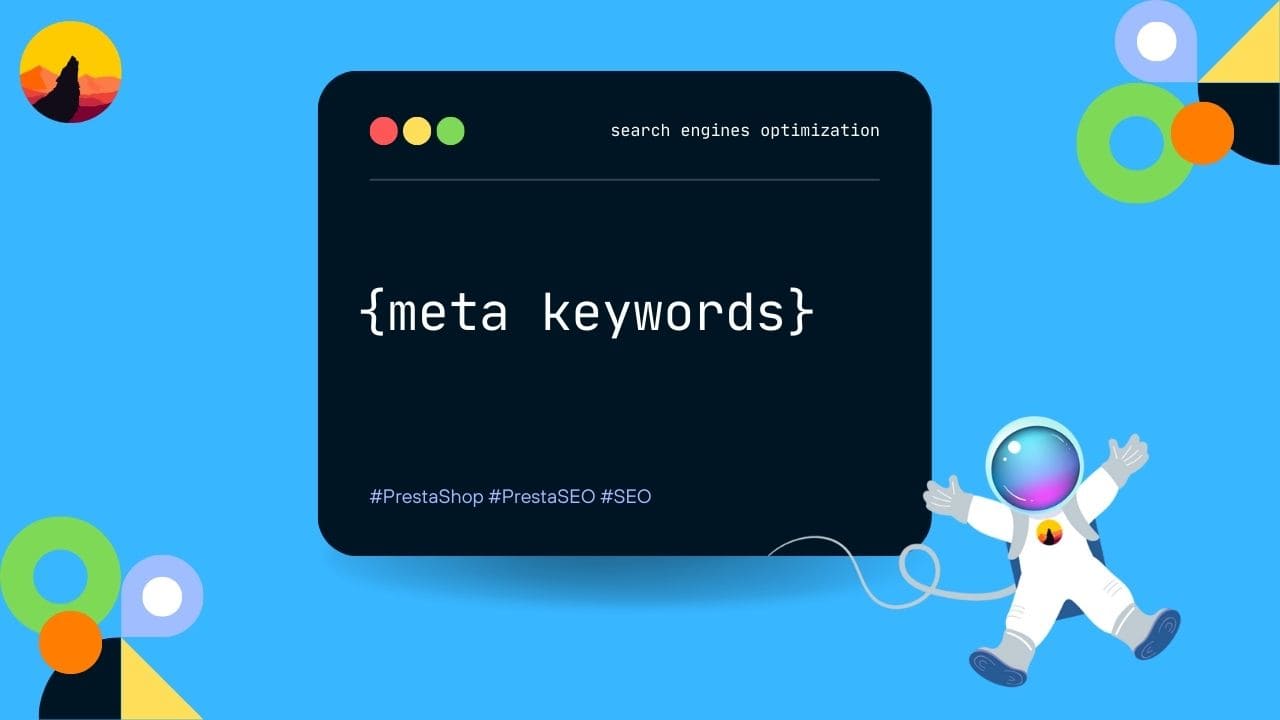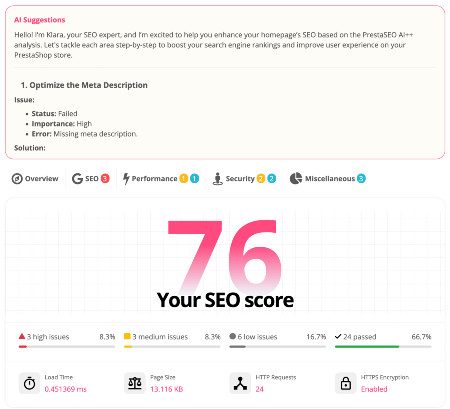Optimize Meta Keywords in PrestaShop: Best Practices with the meta tag
Hello! I'm Sarah, and today I’ll be addressing a common question many people still ask: what role do meta keywords play in PrestaShop?
Although Google no longer uses them to rank your site, some search engines may still consider them.
That’s why PrestaSEO AI++ allows you to manually add meta keywords for your product pages and categories, ensuring you cover all bases.

While their use is less significant for Google, they could still have value for other platforms.
This module also helps you adjust important SEO elements, like descriptions or page titles, to improve your site’s performance.
The Role of Meta Keywords in SEO for PrestaShop
In earlier days, adding keywords to your product meta or category meta was common practice. This technique, known as "keyword stuffing," involved overloading metadata with search terms to boost ranking.
However, since 7 Jan 2015, Google has ignored these tags due to misuse. While this field is no longer crucial for Google, it's still possible that some search engines may use them.
When using PrestaShop, you might still need to input keywords for those engines. With this alternative to the PrestaShop SEO Expert module, you can also quickly adjust meta details, such as the meta title and description.
The SEO tab in PrestaShop makes these settings accessible across your pages and categories, allowing you to configure these fields without much hassle.
Editing Meta Tags in PrestaShop with PrestaSEO AI++
In PrestaShop, meta tags are managed through the admin panel of PrestaSEO AI++. Here, you can manually edit information like your product meta and meta description as well as the meta keywords.

However, manually configuring each page can be time-consuming, especially if you need to update multiple entries at once.
That’s where PrestaSEO AI becomes valuable, offering a mass edit option for updating your metadata efficiently.
To enhance your rankings, the mass edit feature in PrestaSEO AI++ lets you update all relevant metadata fields across your store.
In other hands, simply click the edit button next to the page you want to adjust, then inspect and refine your meta descriptions as needed. This saves time and makes sure your store is still consistent on all categories.
Usually, people will find the header.tpl file in the theme folder to customize how these tags displays on the home page and other key pages. Utilizing PrestaSEO AI will alleviate this arduous process.

This flexibility allows for deeper customization, ensuring that your store’s metadata is perfectly optimized.
Using PrestaSEO AI++ to Enhance SEO
Beyond meta keywords, the true strength of PrestaSEO AI is in its comprehensive management of SEO elements. With built-in tools, you can configure titles, descriptions, and URLs to improve your site’s visibility.
The user can select to view its link and content directly as it will appear in Google search results, without needing to write any code.
Real-time analysis helps you track performance and make adjustments based on data.
This PrestaShop module enables you to manage the optimization of individual product pages, improving your site’s relevance without having to rely too heavily on keyword stuffing.
In addition to real-time insights, PrestaSEO AI helps you manage the metadata for each product, whether it’s meta title information or other descriptions.
The PrestaShop forums often recommend manually reviewing your metadata periodically. PrestaSEO AI simplifies this process, making it easier to optimize your site.
While meta keywords are no longer a primary factor for Google, they still exist for some search engines, making it important to include them as part of your broader strategy.
The PrestaSEO AI module helps you manage tags and optimize SEO across your product and category pages.

Whether you need to use meta tags for your pages, or design a custom strategy, PrestaSEO AI simplifies the process.
If you’re ready to take your Prestashop SEO to the next level, PrestaSEO AI is the perfect solution to assist with meta tags management and overall optimization.
 Countdown x Bar
Countdown x Bar Xleft
Xleft Jump to Checkout
Jump to Checkout GDPR
GDPR

